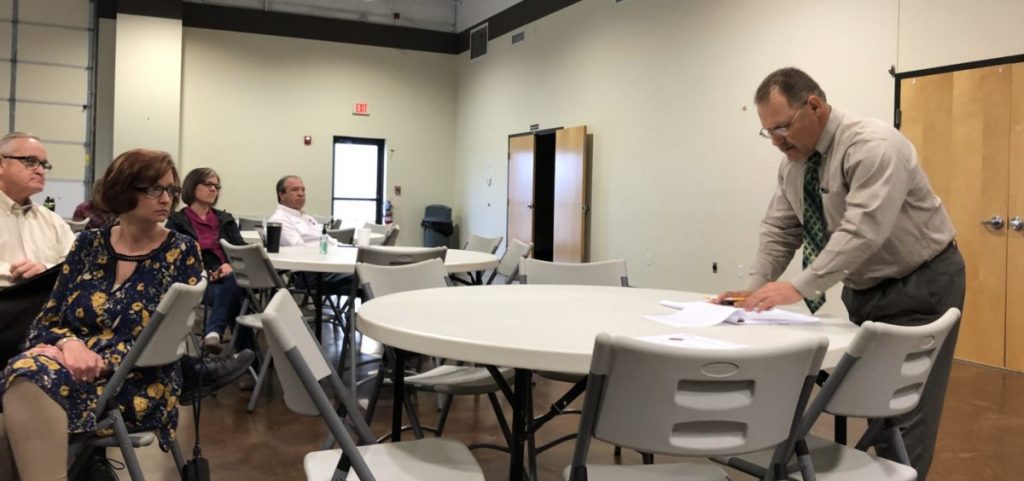News

“We Can’t Get To Everybody”: Hospital Closures, Underfunded Health Centers Hinder Coronavirus Response
By: Liam Niemeyer | Ohio Valley ReSource
Posted on:
Local public health departments and hospitals are on the front lines of facing the coronavirus throughout the Ohio Valley, yet the health professionals who run these facilities say years of underfunding and hospital closures have diminished these services that now face the crisis.
Dan Brown, a former councilman for the riverside village of Bellaire, Ohio, believes the emergency management services in his community and Belmont County are strong in facing the coronavirus, with several volunteer fire departments in “spitting distance” from his village. But that’s not what he’s worried about.
Belmont Community Hospital in Bellaire closed last April, and five miles upriver, East Ohio Regional Hospital and Ohio Valley Medical Center near Wheeling, West Virginia, closed their doors. One hospital remains in Wheeling.
“The number of beds have gone down so dramatically. I can’t imagine if we had any kind of outbreak, with a two percent or five percent fatality rate, we’re in deep trouble,” Brown said. “The whole thing is setting up for failure.”
Even before the pandemic, Brown said, the hospital closures meant that those in communities near Bellaire would have to travel farther to receive services like kidney dialysis, and he’s concerned a similar situation could happen with the current outbreak. On Friday, Belmont County officials confirmed two cases of the novel coronavirus.
One nurse in the upper Ohio Valley said her hospital is already dealing with a spike of patients and concerns about lacking resources. Megan Carroll works at Trinity Health System in Steubenville, Ohio, and was a nurse at East Ohio Regional Hospital before it closed.
“Resources are limited. Testing is limited. Staffing is limited, and of course beds are limited. Any potential outbreak, including the one that’s happening now will devastate resources,” Carroll said. “The public is irritated. They want treatment, but we can’t get to everybody all at once.”
As of Friday afternoon, she said her hospital is already having emergency room patients waiting six to seven hours to be seen by staff, and staff are establishing quarantine rooms for anybody who is suspected to have coronavirus.
Nearly 20 percent of more than 100 rural hospital closures across the country since 2010 have been in Appalachia, according to the Cecil G. Sheps Center for Health Services Research at the University of North Carolina at Chapel Hill.
Hospitals are not the only important piece of the public health infrastructure to be diminished around the Ohio Valley. Officials say other vital parts of these public health systems now facing stress from the coronavirus could have been fortified years before.
Underfunded, Overworked
Under normal circumstances, Jim Tolley’s public health department would conduct restaurant inspections and help couples plan to raise families. But these aren’t normal circumstances.
Tolley, interim director for the Pennyrile District Health Department in west Kentucky, gave stern recommendations to school district superintendents, elected officials and hospital staff, during a regional meeting Thursday.
For example, nursing homes should limit visitors, hospitals should review plans in handling a spike of patients, and school districts should prepare for the governor to close schools. Later that day, Kentucky’s governor requested schools do just that.
But with a crisis like coronavirus, he’s strapped for resources and manpower. His public health department, covering several counties, is working with half the staff he had in 2012.
Three out of his five county health centers in west Kentucky had to close one day out of the week to maintain services. And a report last year showed his department within 12 months of financial insolvency due to poor state funding and the state’s pension troubles.

“When these events come up and we don’t have the staffing that we need, it shows the importance of having some reserve,” Tolley said. “They can send the money out, but it takes years to get a public health nurse fully trained.”
Other rural public health departments in the Ohio Valley face similar challenges. Georgia Heise is the director of the Three Rivers District Health Department in Owenton, Kentucky, and serves on the executive board for the National Association of County and City Health Officials.
“They wait until we’re in the midst of a crisis, and then we throw money at stuff and do very drastic measures,” Heise said. “Public health needs to be an infrastructure-type thing.”
She said many rural health departments often have to save and stretch influxes of funding and resources they receive from addressing past health crises, like the Zika virus, to plan for future situations like the coronavirus. But it’s not a sustainable strategy, leaving her staff overworked.
“In this particular emergency, if we can’t use it in this one, we’ll use it in the next one. But that’s not how that should go,” Heise said. “Let’s fund things for what they actually are and what they actually cost.”

